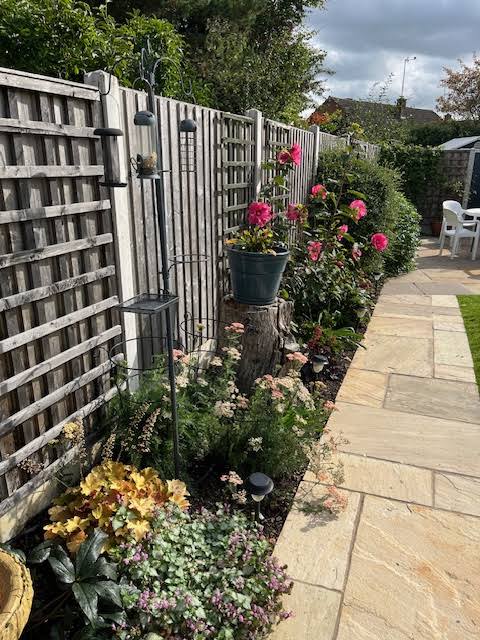If you want to elevate the beauty and structure of your outdoor space, it’s time to Transform your garden with Garden borders! Garden borders are a simple yet effective way to add style, organization, and definition to your landscape. From separating flower beds and lawns to creating pathways and focal points, borders enhance both functionality and aesthetic appeal.Whether you have a small backyard, a large garden, or a balcony with planters, garden borders can adapt to any space, bringing a polished and professional look. In this guide, we’ll explore the types of garden borders, materials, design ideas, and practical tips to help you transform your garden into a stunning, organized retreat.Why Garden Borders Are ImportantGarden borders are more than decorative features—they serve several practical and aesthetic purposes:Define Spaces: Separate lawns, flower beds, vegetable gardens, and pathways for a clean layout.Prevent Encroachment: Keep grass, weeds, or plants from spreading into unwanted areas.Enhance Visual Appeal: Add structure, color, and texture to your garden design.Create Focal Points: Highlight specific plants, trees, or garden ornaments.Ease Maintenance: Simplifies mowing, trimming, and weeding by creating clear boundaries.Understanding these benefits is the first step to designing an organized and visually appealing garden.Types of Garden BordersThere are numerous options when it comes to garden borders. Choosing the right type depends on your style, budget, and maintenance preferences.1. Natural BordersHedges and Shrubs: Boxwood, lavender, and yew are ideal for creating formal or informal borders.Flowering Plants: Planting low-growing flowers like marigolds, petunias, or pansies adds color along edges.Grasses and Ground Covers: Creeping thyme, sedum, or ornamental grasses provide soft, flowing borders.2. Hardscape BordersStone Borders: Natural or cut stones create a rustic, classic appearance.Brick or Concrete Edging: Durable and versatile, ideal for modern or formal gardens.Wood Borders: Timber or logs provide warmth and a natural look, perfect for cottage-style gardens.Metal Edging: Steel or aluminum borders offer a sleek, contemporary finish.3. Mixed BordersCombine plants and hardscape materials for a layered, textured effect.For example, use a low stone border with flowering plants spilling over for a balanced design.Design Ideas for Garden BordersCreating garden borders is not just functional—it’s a chance to showcase creativity.1. Straight BordersPerfect for formal or geometric gardens.Works well along pathways, driveways, or rectangular flower beds.2. Curved BordersAdds softness and natural flow to your garden.Ideal for informal cottage gardens, tropical designs, or areas with uneven terrain.3. Raised BordersUse raised beds with wooden or stone edges to highlight plants.Excellent for vegetable gardens or flower beds needing better drainage.4. Layered BordersCombine multiple layers of plants by height, color, or texture.Place taller plants at the back and shorter varieties in front for visual depth.5. Edible BordersUse herbs, vegetables, or small fruit bushes as functional borders.Examples: rosemary, thyme, lettuce, or cherry tomatoes.Materials and Maintenance TipsSelecting the right materials and caring for your borders ensures longevity and impact.1. MaterialsNatural Stone: Durable, versatile, and timeless.Bricks: Classic, easy to install, and suitable for formal gardens.Wood: Affordable, warm, and natural; may require treatment for weather resistance.Metal: Modern, sleek, and long-lasting.2. Maintenance TipsRegularly trim hedges or shrubs to maintain shape.Keep edges clear of weeds and debris.Inspect hardscape borders for damage or shifting.Refresh mulch or gravel periodically for a polished look.Rotate seasonal flowers or plants to keep borders vibrant year-round.Practical Tips for a Successful Garden BorderPlan Your Layout: Sketch the garden design and decide where borders will go.Measure Correctly: Ensure borders align with pathways, flower beds, and lawns.Choose the Right Plants: Select species suited to sunlight, soil, and climate.Consider Height and Texture: Vary plant heights and foliage for interest.Blend Materials: Mix natural and hardscape borders for a balanced aesthetic.Think Seasonally: Incorporate plants that bloom at different times for year-round beauty.Accessibility: Ensure borders allow easy access for planting, pruning, and maintenance.Creative Border Ideas to Transform Your GardenColorful Flower Edges: Use a combination of vibrant annuals and perennials along pathways.Rustic Log Borders: Place timber logs for a charming, rustic appeal.Low Stone Walls: Define flower beds or patios with natural stone walls.Herb Borders: Line garden paths with aromatic herbs for functionality and fragrance.Vertical Borders: Use trellises, fences, or metal edging with climbing plants to maximize small spaces.These creative ideas allow you to Transform your garden with Garden borders! while adding personality and charm.ConclusionGarden borders are a simple yet transformative feature that adds beauty, structure, and functionality to any outdoor space. By carefully selecting materials, plants, and design styles, you can Transform your garden with Garden borders! and create a polished, inviting landscape.Whether you choose formal stone edges, rustic timber logs, flowering borders, or mixed designs, borders define your space, enhance visual appeal, and simplify garden maintenance. Homeowners in the United States, United Kingdom, and Canada can adopt these strategies to elevate their outdoor spaces into beautiful, organized retreats.Start today by planning your garden borders, and enjoy a structured, colorful, and captivating garden all year round.

